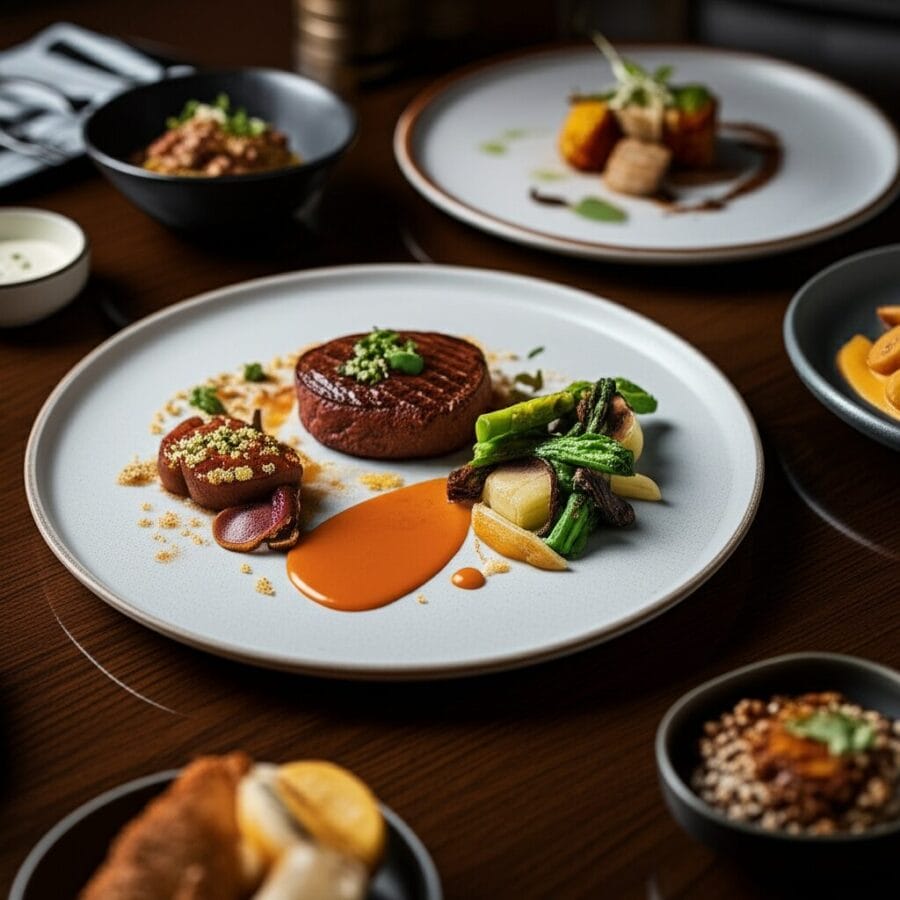When exploring the world of fine dining and gastronomy, understanding the top 20 restaurants meaning can truly enrich your appreciation of what makes a restaurant stand out. Whether you are a food enthusiast, a traveller looking for exceptional dining experiences, or simply curious about how eateries earn their spots among the best, this guide will unravel the terminology and significance behind culinary rankings.
What Is the Top 20 Restaurants Meaning?

The phrase “top 20 restaurants meaning” usually refers to a curated list of select dining establishments regarded as the finest of the finest in a particular region, country, or even worldwide. These rankings aim to identify restaurants that excel in food quality, creativity, service, atmosphere, and often consistency. Being named in the “top 20” signals a level of prestige that goes beyond just good food; it means the restaurant offers an experience that is admired by critics, peers, and diners alike.
Most commonly, these lists are compiled annually by reputable food magazines, critics’ associations, or culinary institutions. They are designed to give food lovers a reference point to explore outstanding places that deliver top-notch culinary experiences.
Understanding the Ranking of Top Restaurants
When discussing the ranking of top restaurants, it’s important to acknowledge that the process involves several key criteria:
– Food Quality and Innovation: The core of any restaurant’s reputation. Are the ingredients fresh, well-sourced, and combined in creative ways? Chefs who push culinary boundaries often gain spots on these lists.
– Service Excellence: Attentive, knowledgeable, and friendly staff can elevate a meal from excellent to unforgettable.
– Ambience and Atmosphere: The setting and mood play a big role in overall dining satisfaction.
– Consistency Over Time: A good restaurant must deliver quality experiences repeatedly, not just occasionally.
– Critical Acclaim & Peer Reviews: Feedback from respected food critics, global chefs, and even diners helps generate rankings.
A restaurant might rank differently depending on who is compiling the list. For example, some awards focus more on food innovation, while others weigh consistency or cultural influence more heavily.
Food Awards Terminology You Should Know
Understanding food awards terminology is key to decoding what it means when a restaurant is described as being in the top tier. Here are some common terms:
– Michelin Stars: Probably the most well-known ranking, Michelin awards one to three stars based on the quality, mastery of technique, personality, and consistency of the food.
– The World’s 50 Best Restaurants: A yearly list that ranks the top global restaurants, celebrated for innovation, creativity, and unique dining experiences.
– AA Rosettes: From the UK’s AA Hospitality group, these awards recognise restaurants for culinary skills and standards.
– Bib Gourmand: Given by Michelin to restaurants offering good quality food at moderate prices.
– James Beard Awards: American culinary awards recognising chefs, restaurants, and food writers for excellence.
– Gourmet Traveller Restaurant Awards: Popular in Australia, it highlights top restaurants nationally based on reader and critic feedback.
Each term offers insight into different aspects of what great food and great dining look like around the world.
What Makes the Best of the Best Restaurants?
The phrase best of the best restaurants is often thrown around when a place has not only received awards but also earned a lasting reputation among diners and experts alike. Typically, these places showcase:
– Mastery in cooking techniques
– Exceptional use of fresh, local, and seasonal ingredients
– A unique dining concept or story
– Impeccable hospitality that makes guests feel special
– Ability to surprise and delight even the most seasoned food critics
These attributes help the restaurant stand out from thousands of others vying for attention.
Key Culinary Ranking Terms Explained
If you’re diving into food journalism or just want to be well-informed, some culinary ranking terms pop up frequently:
– Fine Dining: Upscale, often formal dining with elaborate courses.
– Casual Dining: More relaxed atmospheres with good food but less formality.
– Tasting Menu: A set menu offering sample-sized portions of a chef’s signature dishes.
– Farm-to-Table: Restaurants that promote using ingredients directly sourced from local farms.
– Fusion Cuisine: Combines elements from different culinary traditions.
Knowing these terms helps you better appreciate what the rankings highlight—whether it’s a restaurant’s style, approach, or inspiration.
Why Trust Culinary Rankings?
With so many online review sites and food blogs, knowing why some lists deserve your trust can be tricky. Trusted rankings usually have a transparent methodology, involving expert judges, anonymous visits, and consistent standards.
Experienced food critics and organisations offering these ranking of top restaurants listings often spend months researching, tasting, and evaluating. Their reputations hinge on fairness and accuracy, which means their recommendations hold real weight.
How to Use the Top 20 Restaurants Meaning in Your Dining Adventures
Knowing what makes a restaurant a top contender can guide your next meal out or travel plans:
– Choose restaurants from diverse geography to sample different food cultures.
– Pay attention to the style and atmosphere that matches your mood or occasion.
– Use rankings as a starting point, but also check recent reviews or personal recommendations.
– Remember that a “best” restaurant might not suit everyone’s taste or budget.
Final Thoughts on Culinary Ranking Terms
Understanding terms like the top 20 restaurants meaning and related culinary ranking jargon gives you a deeper connection to the food you eat and the places you visit. Whether you want to appreciate the skill behind a Michelin-starred meal or simply impress friends with your knowledge, these insights bring the ever-changing world of fine dining into clearer focus.
By recognising the effort, creativity, and consistency it takes to reach the top, you can celebrate great food with even more enjoyment and confidence. So next time you see a list or an award, you’ll know exactly what it means to call a place one of the best of the best restaurants.


Leave a Reply